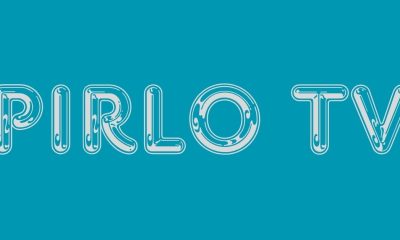CRYPTO
Shannon Swanick TPO: Bridging Theory and Practice

In the ever-evolving world of business, where strategies shift and innovations emerge at lightning speed, one name stands out: Shannon Swanick TPO. Known for her groundbreaking approach to TPO—Theory-Practice-Operation—Swanick has created a bridge that connects theoretical knowledge with practical application. But what does this mean for professionals today? The integration of theory and practice is more than just an academic concept; it’s a game changer in real-world scenarios. As we dive deeper into the realm of Shannon Swanick’s TPO, you’ll discover how this framework can transform your understanding and execution within various industries. Get ready to explore its significance, benefits, challenges, and personal applications as we unlock the potential of TPO together.
Understanding the Importance of Theory and Practice Integration
The integration of theory and practice is essential in today’s fast-paced world. It creates a bridge that connects abstract concepts with real-world applications. This connection allows individuals to grasp not only the “how” but also the “why” behind their actions.
When theory informs practice, decision-making becomes more informed and strategic. Practitioners can draw from established knowledge while adapting it to specific contexts.
Moreover, this synergy fosters innovation. New ideas emerge when practitioners apply theoretical frameworks creatively. Collaboration between theorists and practitioners enhances problem-solving capabilities.
Organizations benefit significantly by embracing this integration. Employees equipped with both theoretical understanding and practical skills tend to be more effective in their roles, leading to improved performance overall.
This dynamic relationship encourages continuous learning and adaptability—qualities crucial for success in any field today.
The Benefits of TPO in Business Settings
Implementing Shannon Swanick’s TPO in business settings unlocks significant advantages. First, it fosters a culture of innovation. When theory meets practice, ideas transform into actionable insights that can drive progress and change.
Second, TPO encourages collaboration across departments. Teams gain diverse perspectives that enrich problem-solving capabilities. This interconnectedness enhances communication and reduces silos within organizations.
Moreover, businesses benefit from improved decision-making processes. Employees equipped with theoretical knowledge can better analyze situations and forecast outcomes based on real-world applications.
Additionally, the integration of TPO leads to increased employee engagement. Workers feel empowered when they see their contributions are valued beyond traditional boundaries.
Embracing TPO strengthens adaptability in an ever-evolving market landscape. Companies that prioritize this approach position themselves for long-term success as they readily adjust strategies based on practical experiences informed by robust theories.
Case Studies of Successful TPO Implementation
Several organizations have successfully integrated Shannon Swanick’s TPO methodology, demonstrating its effectiveness in real-world applications.
One compelling case study comes from a tech startup that adopted TPO to streamline their project management. By marrying theoretical frameworks with practical execution, they reduced project completion times by 30%. Team members reported higher satisfaction and engagement levels due to clearer roles and responsibilities.
In another instance, a healthcare provider utilized TPO to improve patient care protocols. Through workshops that combined theory with hands-on training, staff were able to implement new procedures rapidly. This led to increased patient satisfaction scores and more efficient workflows.
These examples illustrate how embracing the synergy between theory and practice can yield tangible benefits across various industries. It’s not just about learning concepts; it’s about applying them effectively for lasting change.
Challenges and Solutions for Implementing TPO
Implementing Shannon Swanick TPO can present several challenges. One major hurdle is resistance to change within organizations. Employees may feel comfortable with existing practices and hesitant to adopt new theories.
Another challenge lies in aligning theoretical frameworks with practical applications. Miscommunication between departments often leads to confusion over how TPO should be applied on the ground level.
To address these issues, open communication is essential. Encouraging dialogue among team members can bridge gaps in understanding and foster a culture of collaboration.
Training sessions tailored for different roles can also help integrate TPO smoothly into daily operations. By providing real-life examples, employees gain clarity on how theory translates into practice.
Support from leadership plays a crucial role too. When executives champion TPO initiatives, it instills confidence across the organization and encourages participation at all levels.
How Individuals Can Utilize TPO in their Careers
Integrating Shannon Swanick’s TPO into your career can be transformative. Start by assessing your current skills and knowledge. Identify gaps where theory may enhance practice.
Engage in continuous learning. Attend workshops or webinars that focus on theoretical foundations relevant to your field. This will deepen your understanding and improve practical application.
Networking is crucial. Connect with professionals who embody TPO principles. Their insights can offer real-world examples of how to balance theory with hands-on experience.
Don’t shy away from experimentation at work. Apply theoretical concepts to projects, then evaluate the outcomes. This iterative process fosters growth and innovation.
Reflect regularly on your experiences. Journaling about successes and setbacks helps you draw lessons from both sides of the equation, blending them into a cohesive approach for future endeavors.
Conclusion: The Future of TPO and its Impact on Business and Personal Growth
As the landscape of business continues to evolve, Shannon Swanick’s TPO model offers a dynamic framework for integrating theory and practice. This integration is not just beneficial; it’s essential in today’s fast-paced environment. Companies that embrace TPO stand to gain a competitive advantage, fostering innovation while improving operational efficiency.
On an individual level, those who apply TPO principles can expect significant personal growth. The ability to bridge theoretical knowledge with practical application enhances skill sets and opens new career pathways. By continuously refining this connection between learning and doing, professionals can navigate their careers more adeptly.
The future of TPO lies in its adaptability. As industries change and new challenges emerge, the versatility of Shannon Swanick’s approach will be pivotal in cultivating leaders who are both knowledgeable and pragmatic. Embracing TPO means investing in sustainable growth—both at an organizational level and personally.
Shannon Swanick’s vision for bridging theory with hands-on experience is setting a precedent for how we understand success in business today. It highlights that true mastery comes from the harmony between knowing what works on paper and applying it effectively within real-world scenarios—a balance essential for thriving amidst constant change.
CRYPTO
Young Thug net worth: Key Factors Behind His Rising

Young Thug has taken the music world by storm, captivating audiences with his unique style and innovative sound. As a prominent figure in hip-hop, he has not only made waves with his chart-topping hits but also amassed significant wealth along the way. The question on many lips is: what is Young Thug’s net worth?
This blog post dives deep into the key factors behind his financial success. We’ll explore how early struggles shaped his career, examine lucrative business ventures, and analyze collaborations that skyrocketed him to fame. You’ll also discover how controversies have impacted both his reputation and finances over time.
Join us as we break down the numbers and predict what lies ahead for this dynamic artist’s net worth in an ever-evolving industry!
Early Success and Financial Struggles
Young Thug burst onto the music scene with his distinctive style and unique voice. His early mixtapes, like “1017 Thug,” showcased his raw talent and creative flair. These projects garnered attention from major labels and fans alike.
However, success didn’t come without its challenges. Despite initial acclaim, Young Thug faced significant financial hurdles. The transition from underground artist to mainstream star is rarely smooth.
Inconsistent income streams often left him in precarious situations. He struggled to navigate the complexities of the music business while trying to maintain artistic integrity.
Despite these setbacks, Young Thug’s determination shone through. Each obstacle was met with resilience as he worked tirelessly on new material and collaborations that would eventually pave the way for greater recognition and stability in his career.
Business Ventures and Collaborations
Young Thug has not only made waves in music but also carved out a niche in the business world. His entrepreneurial spirit is evident through various ventures that complement his artistic persona.
One of his notable collaborations was with the fashion brand Gucci. This partnership showcased Young Thug’s unique style and helped him penetrate the fashion industry, attracting attention from high-profile designers.
Additionally, he launched his own record label, YSL Records. This move allowed him to nurture emerging talent while expanding his influence beyond just performing. Through strategic partnerships with other artists, he has consistently created buzz around collaborative projects that often break streaming records.
Thug’s ability to blend music with business acumen illustrates how he leverages creativity for financial success. By continuously exploring new avenues and aligning himself with diverse brands, Young Thug solidifies his legacy as both an artist and a savvy entrepreneur.
Influence on the Music Industry
Young Thug’s influence on the music industry is undeniable. He has redefined hip-hop with his distinct style and approach to songwriting. His use of unconventional flows and vocal delivery sets him apart from many contemporaries.
Thug’s willingness to experiment has opened doors for new artists. He blends genres seamlessly, incorporating elements of trap, punk, and R&B. This fusion encourages others to break away from traditional boundaries in music.
As a fashion icon, Young Thug also impacts culture beyond sound. His bold choices challenge norms within both the music scene and society at large.
Collaborations with established names further amplify his reach. Each partnership adds layers to his artistry while introducing fresh sounds into mainstream channels.
His artistic vision continues inspiring upcoming musicians who seek authentic expression in their work. The ripple effect of Young Thug’s contributions will be felt for years to come.
Controversies and Legal Issues
Young Thug’s career has been marked by a series of controversies and legal challenges that often overshadow his musical achievements. His unique style and persona have attracted attention, but not all of it is positive.
In 2015, he was arrested on drug charges, which raised eyebrows in the music community. This incident highlighted how quickly fame can turn into scrutiny.
More recently, Young Thug faced serious legal troubles when he was indicted along with several associates under RICO laws. The accusations included gang-related activities that painted a troubling picture for both him and his label.
These events reveal the complexities of navigating fame while dealing with personal and legal issues. They also serve as reminders of how external factors can impact an artist’s financial status and public perception in this industry.
Growing Net Worth: Breaking Down the Numbers
Young Thug’s net worth has seen remarkable growth over the years. Recent estimates place it between $8 million and $10 million, but there’s more to this figure than meets the eye.
His earnings primarily come from music sales, streaming revenue, and live performances. Each album release often correlates with a significant boost in income.
Collaborations play a crucial role too. By working with prominent artists like Travis Scott and Post Malone, Young Thug expands his audience reach while cashing in on lucrative projects.
Merchandise sales add another layer to his financial portfolio. His unique fashion sense translates well into trendy apparel lines that resonate with fans.
Real estate investments also contribute significantly to his wealth. Properties purchased in prime locations have proven valuable as they appreciate over time.
In essence, Young Thug’s growing net worth reflects diverse revenue streams that continue to evolve alongside his career trajectory.
Future Predictions for young thug net worth
As Young Thug continues to evolve as an artist, his net worth is poised for significant growth. With multiple upcoming projects and collaborations on the horizon, there’s no shortage of opportunities for financial success.
His unique style and willingness to experiment with different genres attract a diverse audience. This broad appeal can lead to increased streaming revenue, boosting his earnings considerably.
Moreover, Young Thug’s ventures into fashion and endorsements present additional income streams. As he solidifies his brand outside of music, fans will likely support his endeavors in lifestyle products or apparel lines.
Investments in real estate and other businesses could also play a crucial role in enhancing his wealth. If he maintains strategic partnerships within the industry while navigating legal challenges wisely, we might see him reaching new financial heights soon.
Conclusion
Young Thug has established himself as a significant player in the music industry. His unique style and innovative approach have not only garnered him a massive fan following but also led to impressive financial growth. From early struggles to newfound success, his journey reflects resilience and creativity.
Each business venture he undertakes adds another layer to his brand, further increasing his young thug net worth. Collaborations with top artists have elevated both his profile and income potential. The controversies he faces may challenge him, but they often serve to keep him relevant in an ever-changing landscape.
Looking ahead, the future seems promising for Young Thug. As trends shift and new opportunities arise, it will be interesting to see how he continues to navigate this dynamic environment while expanding his wealth. With such a strong foundation already laid down, there’s no doubt that Young Thug’s story is far from over—his net worth likely set for continued growth in the coming years.
CRYPTO
How the Copy and Paste Latina Redefines Creativity

In today’s fast-paced digital world, creativity often takes on new forms. Among these emerging expressions is the concept of the “copy and paste Latina.” This term captures a unique intersection of culture, identity, and innovation within the Latinx community. But what does it truly mean to be a copy and paste Latina? Is it simply about imitating trends or something deeper? As we explore this phenomenon, we’ll uncover how these women are reshaping what creativity looks like in our modern society. Prepare to dive into a vibrant narrative that celebrates originality while challenging stereotypes along the way.
The History of the Copy and Paste Latina Phenomenon
The term “copy and paste Latina” emerged in the late 2010s, reflecting a growing concern about representation in media. It critiques how mainstream culture often homogenizes Latinx identities.
Artists and influencers began to notice patterns where their unique stories were flattened into stereotypes. This was a wake-up call for many who wanted authentic narratives.
Social media played a pivotal role in amplifying these discussions. Platforms like Instagram and Twitter became spaces for sharing experiences, fostering solidarity among creators.
As voices grew louder, so did the call for diversity within the community itself. The pushback against this reductive label prompted artists to redefine what it means to be creative as a Latina.
Emerging talents started showcasing individuality while challenging existing norms across film, music, and fashion. Each story told offers an opportunity to celebrate rich cultural heritages rather than confine them to narrow definitions.
Criticisms and Controversies Surrounding the Term
The term “Copy and Paste Latina” has stirred significant debate. Many argue that it reduces the rich tapestry of Latinx culture to a mere stereotype. Critics contend that labeling women in this way undermines their individual creativity and contributions.
Some see it as a dismissal of authentic artistry, suggesting that those labeled copy and paste merely replicate existing ideas rather than innovate. This perception can be damaging, as it overlooks the diverse influences shaping their work.
Additionally, there are concerns about cultural appropriation versus appreciation. The blurred lines can lead to misunderstandings within both Latinx communities and broader audiences.
Such controversies highlight the importance of context when discussing identity in art. Understanding nuance is essential for fostering respect while promoting genuine expression among artists from various backgrounds.
Examples of Famous Copy and Paste Latinas in Media and Entertainment
When we think of the copy and paste Latina phenomenon, several prominent figures come to mind. These women have sparked conversations by blending cultural influences with their unique flair.
Selena Gomez stands out as a pop icon who embodies this blend. Her music often reflects her Mexican-American heritage while appealing broadly to mainstream audiences.
Another example is Sofia Vergara, known for her role in “Modern Family.” She brings humor and charisma that challenges stereotypes while showcasing Latinx culture’s vibrancy.
Then there’s Cardi B, whose unapologetic authenticity has made waves across genres. She mixes English and Spanish in her lyrics, creating something fresh yet familiar.
These artists demonstrate how the copy and paste Latina can break barriers while embracing their roots. Each one redefines what it means to be creative in today’s diverse media landscape.
The Evolution of Creativity in Latinx Culture
Creativity in Latinx culture has undergone a remarkable transformation over the years. Traditional forms of expression, like folklore and dance, have mingled with modern influences from global art scenes. This fusion creates something vibrant and new.
Street art is one example where this evolution shines. Murals tell stories that resonate deeply within communities while challenging societal norms. These visuals are more than decoration; they spark conversations.
Digital platforms have opened up further avenues for creative voices. Social media allows artists to share their work far beyond local borders, connecting with audiences worldwide.
Music genres also reflect this shift, blending regional sounds with contemporary styles—think reggaeton or cumbia remixing pop elements.
What emerges is a rich tapestry of innovation rooted in heritage yet unafraid to explore uncharted territories. The landscape continues to evolve as each generation adds its unique brushstrokes to an ever-expanding canvas.
Pushing Back Against Stereotypes and Embracing Individuality
Stereotypes often box individuals into narrow definitions. For Latinas, these labels can overshadow their true identities and creativity.
Many are pushing back against these constraints with fierce determination. They celebrate personal stories that highlight their unique experiences, refusing to be merely “copy and paste.”
This rebellion takes various forms—art, fashion, music, and social media presence. Each avenue allows for a distinct voice to emerge while challenging traditional narratives.
By embracing individuality, they foster community support among diverse backgrounds. The result is a vibrant tapestry of culture that reflects authenticity rather than conformity.
Latinas today are redefining what it means to be creative. Their journeys inspire others within the Latinx community to break free from stereotypes and assert their own paths in life.
Conclusion: Celebrating the Multifaceted Identities of Latinx
The landscape of Latinx creativity is rich and diverse, shaped by countless voices and perspectives. The term “copy and paste Latina” attempts to categorize a complex identity but often misses the nuances that come with it. Each artist, creator, or influencer brings their unique flavor to the table.
As we explore this phenomenon, we must acknowledge the individuals who are pushing back against stereotypes. They embrace their roots while crafting new narratives that reflect their experiences. This duality enriches our understanding of Latinx culture and challenges outdated notions about what it means to be creative.
Celebrating multifaceted identities allows for a broader conversation about representation in media and art. It invites us all to appreciate originality in its many forms—whether through traditional methods or modern interpretations.
By recognizing these contributions and encouraging individuality within the community, we can foster an environment where everyone feels empowered to express themselves authentically. The journey of redefining creativity continues; let’s embrace every voice along the way.
CRYPTO
Meet Your New Cleaning Assistant: The Rise of Janitor AI Technology

Imagine walking into a spotless office, the floors gleaming and every surface dust-free. What if this cleanliness could be maintained effortlessly? Enter Janitor AI technology—your new digital cleaning assistant transforming the way we think about sanitation in workplaces and public spaces. In an era where efficiency is king, janitor AI is stepping up to take on the mundane yet essential task of keeping our environments pristine. Curious about how it works and its impact on the cleaning industry? Let’s dive deeper into this innovative solution that promises to change the game for businesses everywhere.
How Janitor AI Works
Janitor AI operates by leveraging advanced algorithms and machine learning. This technology processes data from various cleaning tasks, optimizing efficiency in real-time.
Using sensors and cameras, Janitor AI can detect dirt patterns or clutter. It analyzes this information to determine the best cleaning methods for different surfaces.
The system communicates with automated equipment like robotic vacuums or mops. As a result, it coordinates these tools to ensure thorough cleaning without human intervention.
Additionally, Janitor AI learns from its environment over time. This ability allows it to adapt and improve performance based on user feedback and changing conditions.
With cloud integration, teams can monitor progress remotely. Reports generated by Janitor AI provide insights into cleanliness levels across facilities, helping organizations maintain high standards effortlessly.
Advantages of Using Janitor AI
Janitor AI technology offers numerous advantages for businesses seeking efficient cleaning solutions. One of its primary benefits is precision. These systems use advanced algorithms to analyze spaces and determine the most effective cleaning methods, ensuring no corner is overlooked.
Cost savings are also significant. By automating routine tasks, organizations can reduce labor expenses while maintaining high standards of cleanliness. This allows human staff to focus on more specialized duties.
Moreover, Janitor AI adapts quickly to changing environments. It can reprogram itself based on different layouts or specific requirements without extensive downtime or retraining.
Data collection is another key advantage. Janitor AI systems gather information about usage patterns and maintenance needs, enabling proactive scheduling that optimizes resources and minimizes disruptions.
These technologies enhance hygiene levels by utilizing consistent sanitization practices tailored to various surfaces and areas within a facility.
Case Studies: Companies and Organizations Utilizing Janitor AI
Several companies are embracing janitor AI technology, showcasing its transformative potential in various environments.
For instance, a prominent hospital in California implemented this technology to manage cleanliness across its expansive facility. The result? Improved sanitation compliance and reduced labor costs. Staff can now focus on patient care rather than routine cleaning tasks.
In the corporate world, a leading tech giant integrated janitor AI into their office spaces. This innovation streamlined their waste management process while ensuring that common areas remain spotless at all times. Employees reported increased satisfaction due to the cleaner work environment.
Educational institutions are also getting onboard. A university partnered with an AI provider to maintain campus buildings efficiently. By leveraging data analytics, they improved scheduling and task assignments for custodial staff, optimizing both time and resources.
These case studies illustrate how diverse organizations harness janitor AI to enhance operational efficiency and service quality.
Potential Impact on the Cleaning Industry
Janitor AI technology is set to transform the cleaning industry dramatically. By automating routine tasks, it allows human workers to focus on more complex responsibilities. This shift can lead to higher job satisfaction and productivity in the workplace.
With real-time data analysis, Janitor AI optimizes cleaning schedules based on usage patterns. Facilities become cleaner and healthier environments for everyone, from employees to visitors.
Moreover, implementing this technology can reduce operational costs significantly. Businesses save money by minimizing waste and improving resource allocation.
The integration of Janitor AI also elevates service quality standards across the board. Companies that adopt this innovation position themselves as forward-thinking leaders in an increasingly competitive market.
As customer expectations rise, utilizing advanced technologies becomes essential for success in the cleaning sector. The potential impact stretches beyond efficiency; it may redefine how we view cleanliness itself.
Concerns and Criticisms of Janitor AI
As with any emerging technology, Janitor AI faces skepticism. Some critics worry about job displacement for cleaning staff. The fear is that automation could render human workers obsolete.
Data privacy is another pressing concern. Many people are uneasy about how their premises and personal spaces might be monitored by AI systems. Will sensitive information be adequately protected?
Moreover, the reliability of these technologies can come into question. Machines can malfunction or misinterpret tasks, leading to subpar results in cleanliness standards.
There’s the ethical debate surrounding decision-making in automated environments. Can an AI truly understand the nuances of a cleaning task? These concerns highlight the importance of balancing innovation with responsible implementation in workplaces everywhere.
The Future of Janitor AI Technology
The future of janitor AI technology is brimming with potential. As advancements in machine learning and robotics continue, we can expect these innovations to become even more sophisticated.
Imagine smart sensors that not only detect dirt but also adapt cleaning schedules based on real-time foot traffic. This would optimize efficiency while reducing wasted resources.
Integration with other smart building technologies could create a seamless experience. For instance, janitor AI might communicate with HVAC systems to manage air quality alongside cleanliness.
Moreover, sustainability will likely play a crucial role in the development of this technology. Eco-friendly solutions combined with intelligent algorithms could lead to greener cleaning practices.
As businesses recognize the benefits, investment in janitor AI will rise. The increased adoption will spark competition among providers and drive rapid innovation across the industry.
Conclusion
As we look toward the future, the rise of janitor AI technology signifies a shift in how cleaning tasks are approached across various industries. The innovation promises to streamline operations, reduce costs, and increase efficiency for businesses everywhere. While concerns remain about job displacement and reliance on automation, many experts believe that janitor AI can complement human workers rather than replace them entirely.
This balance between technology and human touch may lead to a more effective cleaning workforce overall. As companies continue exploring this new frontier, the collaboration of intelligence—both artificial and human—holds exciting possibilities.
The landscape is changing rapidly. Organizations embracing janitor AI have already seen positive results. Others will likely follow suit as they realize its potential benefits. This evolution has just begun; keep an eye out for developments in janitor AI tech as it redefines cleanliness standards around us.
-

 NEWS1 year ago
NEWS1 year agoTsumino-Blog.com: A Hub for Manga and Doujinshi Enthusiasts
-

 FASHION1 year ago
FASHION1 year agoFormal One Piece Swimwear
-

 CRYPTO1 year ago
CRYPTO1 year agoHow Crypto30x.com Zeus is Revolutionizing Cryptocurrency Trading
-

 ENTERTAINMENT1 year ago
ENTERTAINMENT1 year agoSimplify Your System with Plugbox Linux: A Lightweight Arch-Based Distro
-

 TECHNOLOGY1 year ago
TECHNOLOGY1 year agoVy6ys: Exploring the Latest Breakthrough in Tech Innovation
-

 ENTERTAINMENT1 year ago
ENTERTAINMENT1 year agoPirlo TV: The Ultimate Guide to Free Online Sports Streaming
-

 NEWS1 year ago
NEWS1 year agoDiscover Ontpresscom: Redefining Online Publishing
-

 HOME1 year ago
HOME1 year agoThe Ultimate Basement Renovation Checklist: Steps to Follow
